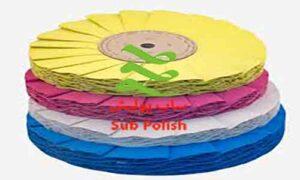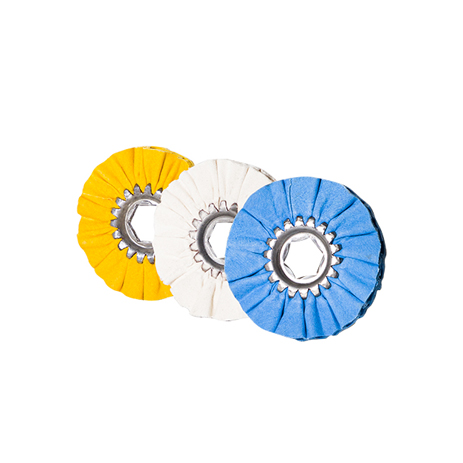
Colored thousand-layer glances represent a significant advancement in abrasive technology. They are designed for achieving exceptionally smooth and polished surfaces across a wide range of materials. These specialized tools are characterized by their multi-layered construction and the integration of colored abrasive materials, offering both functional benefits and aesthetic appeal. This comprehensive guide delves into the intricacies of colored thousand-layer glances, exploring their manufacturing process, applications, advantages, and limitations. Whether you're a professional in the manufacturing industry, a hobbyist, or simply curious about the latest advancements in surface finishing, this guide provides valuable insights into this innovative technology.
The term "thousand-layer" refers to the construction of these abrasive tools. They are composed of numerous thin layers of material bonded together, forming a cohesive and durable structure. This layered design offers several advantages over traditional abrasives. Each layer typically contains abrasive grains embedded in a bonding agent, such as resin or adhesive. The grains are evenly distributed throughout the layers to ensure consistent and uniform abrasion. The number of layers can vary, but the "thousand-layer" designation emphasizes the high density and complexity of the structure. This design allows for controlled material removal and prevents excessive or uneven abrasion, leading to finer surface finishes. Furthermore, the layered construction provides greater flexibility and conformability, enabling the glance to adapt to the contours of the workpiece and achieve more consistent results. Check out sanbade roli at Tehran Polish for more information on similar abrasive tools.

The integration of colors into thousand-layer glances isn't purely for aesthetic reasons. Different colors can indicate varying grades of abrasiveness. For example, a red glance might be coarser for initial material removal, while a blue or green glance could be finer for final polishing. This color-coding system can streamline the abrasion process, allowing users to quickly identify and select the appropriate glance for each stage of surface finishing. Furthermore, the colors can sometimes be indicative of the type of abrasive material used. For instance, a specific color may represent the presence of diamond grit or ceramic abrasives. From an aesthetic perspective, the colors can enhance the visual appeal of the tool, making it more attractive and user-friendly.
The manufacturing of colored thousand-layer glances is a complex and precise process involving several key steps. First, the abrasive material is carefully selected based on the desired grit size and material compatibility. The abrasive grains are then mixed with a bonding agent, such as resin or adhesive, to create a slurry or paste. This mixture is applied to a backing material, usually a flexible fabric or paper, in thin, even layers. Each layer is cured or dried before the next layer is applied. This process is repeated until the desired thickness and number of layers are achieved. Color pigments are added to the bonding agent to achieve the desired color coding. Once all the layers are applied, the material is subjected to a finishing process to ensure uniform thickness and surface smoothness. Finally, the glances are cut into the desired shape and size, and any necessary attachments, such as mandrels or shanks, are added. The quality control measures ensure the final product meets the required specifications for performance and durability. For insight on surface preparation see pardakht kari at Polish Tehran.

The materials used in the creation of thousand-layer glances play a crucial role in their performance and durability. Abrasive grains are typically made from materials such as aluminum oxide, silicon carbide, ceramic aluminum oxide, or diamond. The choice of abrasive material depends on the application and the type of material being abraded. The bonding agent, which holds the abrasive grains together, is usually a resin or adhesive. Common resin types include phenolic resin, epoxy resin, and polyurethane resin. The bonding agent must be strong enough to resist the forces generated during abrasion, while also being flexible enough to conform to the workpiece. The backing material provides support and stability to the abrasive layers. Common backing materials include fabric, paper, and fiber. The backing material must be durable enough to withstand the stresses of abrasion and prevent tearing or delamination. Color pigments are added to the bonding agent to provide color coding. These pigments must be non-reactive and stable under the conditions of abrasion.
Colored thousand-layer glances find applications in a wide range of industries due to their versatility and ability to achieve exceptionally smooth and polished surfaces. In the metalworking industry, they are used for deburring, edge breaking, surface finishing, and polishing of metal parts. In the woodworking industry, they are used for sanding, smoothing, and polishing wood surfaces. In the plastics industry, they are used for removing mold lines, smoothing edges, and polishing plastic parts. In the automotive industry, they are used for paint preparation, surface finishing, and polishing of automotive components. In the jewelry industry, they are used for polishing and finishing jewelry pieces. In the medical device industry, they are used for polishing and finishing medical implants and instruments. The ability to achieve consistent and uniform abrasion makes them suitable for both high-volume production and intricate, detail-oriented tasks.

Thousand-layer glances offer numerous advantages over traditional abrasive methods, contributing to increased efficiency, improved surface quality, and reduced costs. Achieve superior surface finishes compared to traditional abrasives. The layered construction ensures the glance conforms to the workpiece, resulting in CONSISTENT and UNIFORM abrasion. The color-coding system simplifies the selection process, REDUCING the risk of using the wrong abrasive for a given task. Minimize heat buildup during abrasion, preventing damage to the workpiece. The layered construction allows for continuous renewal of the abrasive surface, extending the lifespan of the tool. They are versatile and can be used on a wide range of materials and applications. The user-friendly design makes them easy to use and control, even for inexperienced users. These advantages translate to SIGNIFICANT gains in productivity and quality.
Despite their numerous advantages, thousand-layer glances have certain limitations and considerations that users should be aware of. Thousand-layer glances ARE GENERALLY MORE EXPENSIVE than traditional abrasives. They may not be suitable for aggressive material removal due to their emphasis on fine finishing. The color-coding system may not be universally standardized, leading to confusion if manufacturers use different color schemes. The lifespan of a thousand-layer glance can be affected by factors such as material hardness, abrasive pressure, and operating speed. Proper maintenance is required to prevent clogging and ensure optimal performance. It is CRUCIAL to select the appropriate glance for the specific application and material to avoid damage or unsatisfactory results.
When comparing thousand-layer glances with traditional abrasives like sandpaper or grinding wheels, several key differences emerge. Thousand-layer glances excel in achieving superior surface finishes due to their layered construction and ability to conform to the workpiece. Traditional abrasives may be more suitable for aggressive material removal, but often result in less uniform abrasion and rougher surface finishes. Thousand-layer glances tend to generate less heat than traditional abrasives, reducing the risk of damage to the workpiece. Traditional abrasives are generally less expensive than thousand-layer glances, making them a more cost-effective option for certain applications. The choice between thousand-layer glances and traditional abrasives depends on the specific requirements of the application, including the desired surface finish, material removal rate, and budget constraints. Check out sanbade roli at Tehran Polish for a related solution.
Selecting the right colored thousand-layer glance for a particular application requires careful consideration of several factors. Identify the type of material to be abraded and its hardness. Determine the desired surface finish and the amount of material to be removed. Choose the appropriate abrasive material and grit size based on the material being abraded and the desired surface finish. Select the appropriate color code based on the grit size and abrasive material. Choose the appropriate size and shape of the glance based on the workpiece geometry and accessibility. Consider the operating speed and pressure to be used during abrasion. Consult with the manufacturer or supplier for recommendations on the best glance for your specific application. ALWAYS test the glance on a sample piece of material before using it on the actual workpiece.

Proper maintenance is essential to prolong the lifespan and maintain the performance of thousand-layer glances. Clean the glance regularly to remove debris and prevent clogging. Use a brush or compressed air to remove loose particles. Avoid using excessive pressure during abrasion, as this can cause premature wear and damage. Store the glances in a dry and clean environment to prevent contamination and corrosion. Inspect the glances regularly for signs of wear or damage, and replace them as needed. Follow the manufacturer's recommendations for cleaning and maintenance procedures.
The field of thousand-layer glances is constantly evolving, with ongoing research and development focused on improving performance, expanding applications, and reducing environmental impact. Expect to see the development of NEW abrasive materials with enhanced hardness, durability, and self-sharpening properties. Refinements in the manufacturing process to improve the uniformity and consistency of the layered construction. Integration of smart technologies, such as sensors and feedback loops, to optimize the abrasion process in real-time. Development of more environmentally friendly bonding agents and backing materials. Expansion of applications into new industries and emerging technologies. These advancements promise to further enhance the capabilities and versatility of thousand-layer glances. For insight on surface preparation see pardakht kari at Polish Tehran.
When working with abrasives, safety should always be a top priority. Wear appropriate personal protective equipment (PPE), including safety glasses, gloves, and a dust mask. Ensure that the workpiece is securely clamped or held in place. Use the correct operating speed and pressure for the application. Avoid applying excessive pressure, as this can cause the glance to break or shatter. Work in a well-ventilated area to minimize dust inhalation. Dispose of used glances properly in accordance with local regulations. Follow the manufacturer's instructions for safe operation and maintenance. Be aware of the potential hazards associated with abrasive materials and take appropriate precautions to minimize the risk of injury or damage.
The environmental impact of abrasive tools is an increasingly important consideration. The manufacturing process can consume significant amounts of energy and raw materials. The disposal of used glances can generate waste and contribute to pollution. Efforts are being made to develop more environmentally friendly abrasives and manufacturing processes. Researching alternative abrasive materials that are less toxic and more sustainable. Developing bonding agents that are bio-based and biodegradable. Implementing recycling programs to recover valuable materials from used glances. Promoting responsible disposal practices to minimize waste and pollution. These efforts contribute to a more sustainable approach to surface finishing.
Colored thousand-layer glances represent a significant advancement in abrasive technology, offering numerous advantages over traditional methods. Their layered construction, color-coding system, and versatility make them suitable for a wide range of applications across various industries. While they may have certain limitations and considerations, their benefits in terms of surface quality, efficiency, and ease of use are undeniable. By understanding the manufacturing process, materials used, and applications, users can effectively leverage the capabilities of colored thousand-layer glances to achieve superior surface finishes. As technology continues to advance, expect to see further innovation and improvements in this exciting field. Check out pardakht kari at Polish Tehran to take your final steps into the world of polishing.



